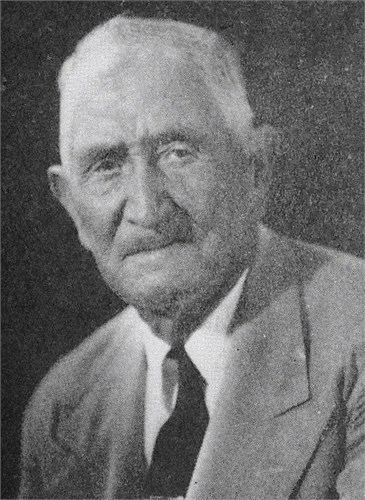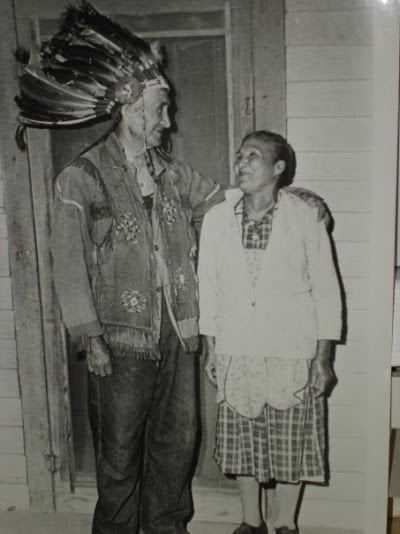Name Samuel Blue | Died 1959 | |
 | ||
Spouse(s) Minnie Hester George, Louisa Hester Jean Canty Children Three children by his first wife; between nine and 20 children by his second wife Religion The Church of Jesus Christ of Latter-day Saints | ||
Samuel Taylor Blue (c. 1871–1959) was a Native American chief of the Catawba Tribe from 1928 to 1939 and also in 1956, although he was looked to as a leading figure in the tribe only some of the time was he the chief. Blue has been called the last native speaker of the Catawba language.
Contents

Personal life
Samuel Blue was the son of Anglo-American Samuel Blue and his Catawba wife Margaret George Brown. His mother was one of the last native speakers of Catawba.
In July 1887 Blue married Minnie Hester George. She died in late 1896 or early 1897. After this Blue married Louisa Hester Jean Canty.
Blue had three children by his first wife. Blue and his second wife Louisa had somewhere between nine and 20 children. Some have alleged that as many as 11 of these children were still born.
Tribal Politics
Blue first entered politics in 1905 when he was made a member of the interim governing council of the tribe along with Lewis Gordon and Ben T. Harris. They then supported the successful election of David Adam Harris as chief of the Catawba. In 1909 Blue was among those who signed the Catawba plea for United States citizenship. He also was a signer of the 1937 request for United States citizenship. Blummer points out this was at some level unneeded because Native American were granted citizenship by the United States in 1924. However, since South Carolina did not recognize their citizenship until 1944, people like Blue were functionally treated as non-citizens in the 1930s and reasonably could think to request citizenship.
Blue was first elected chief of the Catawba in 1928. Blue made regular trips to Columbia, South Carolina where he would speak to the state legislature on behalf of the interests of the Catawba. In 1929 Blue began the process of trying to settle Catawba land claims, a process not completed until 1993. Blue was also a key figure in the process of the Catawba gaining federal recognition which was completed in 1941. he also was one of the main advocates of the Catawba accepting termination of federal wardship in at the time of his death. He ended his service as chief in 1939 but remained a respected figure in the Tribe. He was again elected chief in 1956.
Religious Beliefs
On May 7, 1897, Blue had been baptized into The Church of Jesus Christ of Latter-day Saints in South Carolina. Blue also served as branch president of the branch of the LDS Church on the Catawba Reservation. In the early 20th century he would often help missionaries escape mobs. In 1950 Blue traveled to Salt Lake City and gave a talk at the General Conference on April 9. Also during this trip Blue and his wife Louisa were sealed in the Salt Lake Temple. In 1952 Blue was a speaker at the dedication of the Catawba Branch Building, a dedication performed by David O. McKay.
Blue was a major advocate of the continuation of Catawba culture. He was influenced by Tom Steven's promotion of stomp dances among the Catawba and worked hard to the Beat Dance and the Wild Goose Dance. He also worked with Frank G. Speck to preserve a knowledge of the Catawba language. He was also a strong opponent of alcohol consumption by Catawba.
Blue served as Branch President until his death in 1959, serving a total of 40 years as branch president. At the time of his death he had 119 grand children. Two of his great-grandchildren, Roger Trimmnal and Gloria Trimmnal, were then students at Brigham Young University.
Shortly after his death the play Kah-who Catawba telling the story of the Catawba was produced with the narrator of the play cast as Blue.
